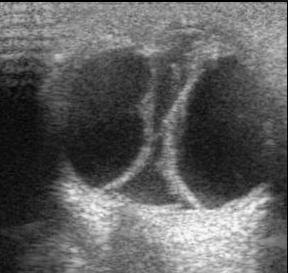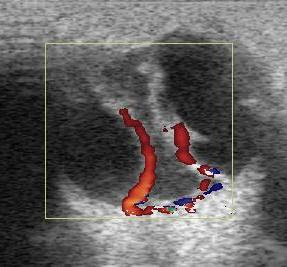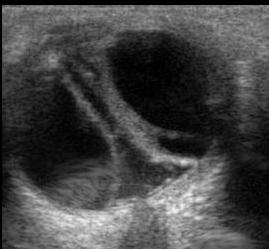The suprachoroidal space is normally virtual because the choroid is in close apposition to the sclera. As fluid accumulates, this space becomes real, and the choroid is displaced from its normal position. Serous choroidal detachment involves transudation of serum into the suprachoroidal space. It may be due to increased transmural pressure, most frequently caused by globe hypotony of any etiology or trauma, or exudation of serum, most frequently caused by inflammation. Serous detachment is typically painless, with a variable degree of vision loss
Hemorrhagic choroidal detachment is a hemorrhage in the suprachoroidal space or within the choroid caused by the rupture of choroidal vessels. This can occur spontaneously (rare), as a consequence of ocular trauma, during eye surgery, or after eye surgery. The outcome is generally worse for intraoperative hemorrhages, which often are accompanied by loss of eye contents.Postoperative hemorrhagic detachments are characterized by sudden excruciating throbbing pain with an immediate loss of vision.
B-scan very well depicts the serous as well as hemorrhagic choroidal detachements. They are seen as well defined, dome-shaped, thick , relatively fixed, choroidal membranes from both sides approximating each other (kissing sign). Being a vascular layer, it shows vascularity on Color Doppler. Serous detachments show no or insignificant echoes in suprachoroidal space while thick internal echoes may be seen in hemorrhagic detachments.



No comments:
Post a Comment